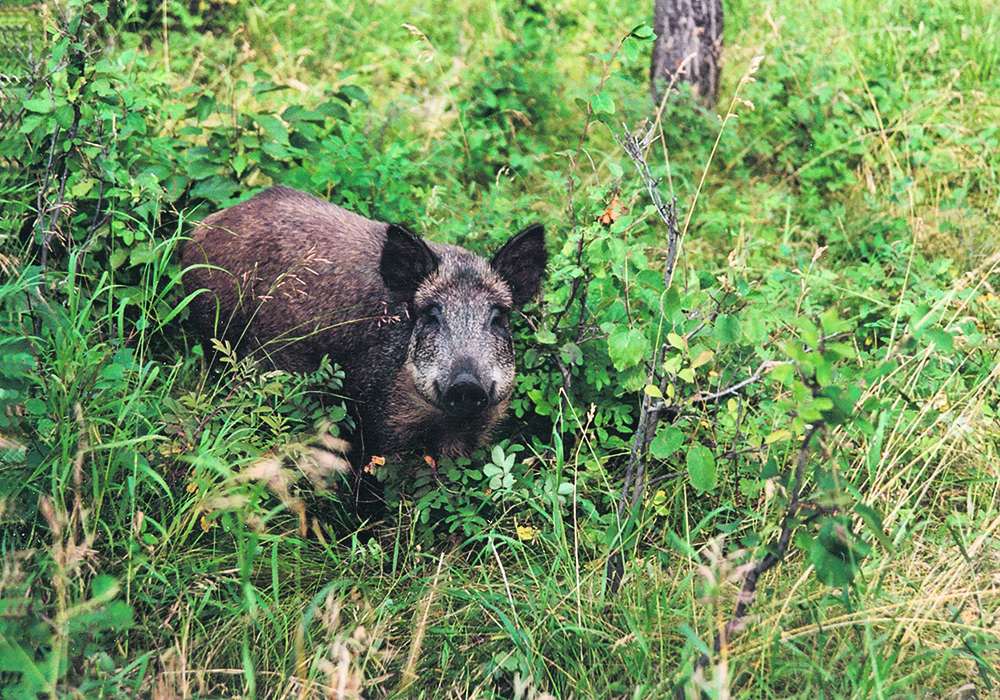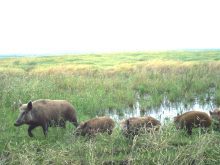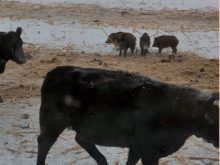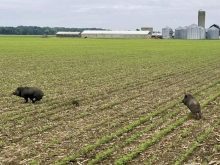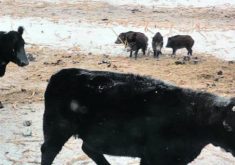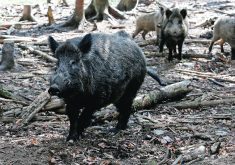Alberta is launching a bounty on the province’s wild pig population to try to stem the pest’s expanding range.
The provincial government is also offering producers compensation for damage caused by wild pigs.
“I like to be an optimist,” said Charlotte Shipp, Alberta Pork’s industry programs manager, when asked if the province’s problem pig population can be controlled.
“I think yes. Everybody is at attention, standing up and really doing what needs to be done in engaging and eradication.”
Read Also

Gene editing digs deeper space in Canadian plant breeding
More Canadian research into crop variety development is incorporating gene editing, and one researcher notes that Canada’s regulatory approach to gene editing will help drive innovation
Government-approved trappers are being offered $75 per set of ears with landowners eligible for the same amount for working with them through the Whole Sounder Trapping Incentive Program.
Hunters will also be able to collect $75 per ear set through the one-year pilot Wild Boar at-Large Ear Bounty Program.
Damage to agricultural land by wild pigs in Alberta is covered through the provincial Wildlife Damage Compensation Program offered by the Agriculture Financial Services Corp.
While the announcements are good news for Shipp, there are concerns that hunting the wild pigs may make them tougher to catch in the future.
The fear around hunting, said Shipp, is that wild pig sounders tend to scatter when hunted one at a time. The intelligent animals quickly adapt and learn new methods to avoid humans.
The problem is compounded by the incomplete understanding of how many wild pigs are currently at large in Alberta. Shipp hoped that previously announced funding for tracking the animals will address that.
“We need to deal with this hunting issue and we need to stay focused on eradication,” said Shipp. “And I think we can get there.”
But that will take at least a decade, she estimated.
Trapping of whole sounders is the preferred eradication method and hunters will not be permitted to take wild pigs in areas where that is taking place.
Meanwhile, the province continues to allow wild boar farms to operate, a move encouraged in the 1980s as an agricultural diversification initiative.
Shipp said she does not advocate dismantling any viable agricultural operation, “but I do think we have to have an enhanced awareness of the risks that they can cause.”
As well, fears are heightened that wild pigs can spread African swine fever to domesticated pig barns.
“There won’t be any easy answers to any of this,” said Shipp.
Nearly 30 primarily central Alberta municipalities have reported wild pig populations as of 2022.
Albertans are being asked to call 310-FARM or email af.wildboar@gov.ab.ca if they see signs of wild pig populations.


